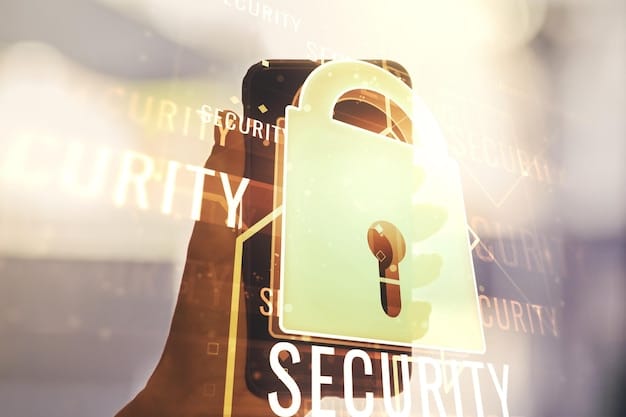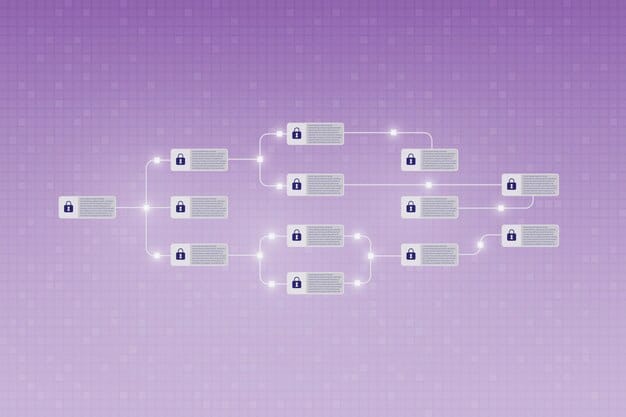End-to-End Encryption: How It Works & Why It Matters

End-to-end encryption (E2EE) is a communication security method that ensures only the sender and receiver can read the messages exchanged, preventing eavesdropping by third parties, including internet service providers, governments, and even the messaging platform itself.
In today’s digital landscape, privacy is more important than ever. End-to-end encryption (E2EE) offers a robust way to safeguard your communications, ensuring that your messages remain confidential between you and your intended recipient, effectively shielding them from prying eyes.
Understanding End-to-End Encryption: The Basics
End-to-end encryption provides a secure channel for communication, making sure that only the people involved in the conversation can understand the content. It’s like sending a letter in a padlocked box where only the sender and receiver have the key.
How Does End-to-End Encryption Work?
E2EE uses cryptographic keys to encrypt messages on the sender’s device and decrypt them on the receiver’s device. This process ensures that the data is unreadable in transit.
Key Components of E2EE
Understanding the components helps to appreciate the effectiveness of E2EE. It relies on a combination of algorithms and key management to achieve secure communication.
- Encryption Algorithm: The mathematical process used to scramble the message into an unreadable format.
- Encryption Key: A secret key used to encrypt and decrypt the message.
- Decryption Key: The corresponding key needed to convert the encrypted message back into its original form.
With these elements working together, E2EE provides strong protection against unauthorized access to your communications.

In summary, end-to-end encryption is a crucial tool for protecting your online communication, especially in an era where data breaches and surveillance are prevalent. It ensures that your conversations remain private and secure.
Why End-to-End Encryption is Important for Online Privacy
In a world where our digital lives are increasingly tracked, understanding the importance of privacy measures like end-to-end encryption becomes crucial. It’s about more than just keeping secrets; it’s about maintaining control over your personal information.
Protecting Against Surveillance
E2EE ensures that your messages can’t be intercepted and read by third parties, including governments and hackers. This is particularly vital for journalists, activists, and anyone living under oppressive regimes.
Data Breach Prevention
Even if a messaging service is hacked, the encrypted messages remain unreadable to the attackers. This prevents sensitive information from being exposed during data breaches.
- Secure Communication: Ensures only the intended recipient can read your messages.
- Data Control: Gives you control over who has access to your private information.
- Peace of Mind: Provides assurance that your conversations are confidential.
Ultimately, adopting end-to-end encryption is an important step towards preserving your digital privacy and security in an increasingly interconnected world. It gives you greater control over your online presence.
Common Misconceptions About End-to-End Encryption
Despite its widespread use and benefits, several misconceptions surround end-to-end encryption. Addressing these misunderstandings is essential for a clear understanding of this security technology.
Myth: Only Criminals Use Encryption
The idea that only those with something to hide need encryption is false. Just as you close the curtains in your home for privacy, encryption is a tool for everyone to protect their sensitive information.
Myth: E2EE Guarantees Complete Anonymity
While E2EE protects the content of your messages, it doesn’t conceal metadata like who you’re communicating with or when. Anonymity requires additional tools and practices.

By dispelling these myths, individuals can better understand the real value and limitations of end-to-end encryption. Knowing the facts empowers you to make informed decisions about your online security and privacy.
How to Use End-to-End Encryption on Popular Platforms
Many popular messaging apps and email providers now offer end-to-end encryption. Understanding how to enable and use this feature can significantly enhance your communication security.
Enabling E2EE on WhatsApp
WhatsApp enables E2EE by default for all chats. However, it’s still a good idea to verify that your conversations are indeed encrypted. Look for the encryption indicator in your chat information.
Using E2EE on Signal
Signal is designed with privacy in mind and offers end-to-end encryption for all messages, voice calls, and video calls. No extra steps are needed to enable it.
- WhatsApp: E2EE enabled by default; verify encryption in chat info.
- Signal: E2EE by default for all communications.
- Email Providers: Use secure email providers or plugins for E2EE.
Taking advantage of end-to-end encryption on your preferred platforms is crucial for maintaining confidentiality in your digital communications. Know the procedures and make it a habit to use it effectively.
Limitations and Vulnerabilities of End-to-End Encryption
While end-to-end encryption provides a high level of security, it is not infallible. Recognizing its limitations and potential vulnerabilities will help you use it more effectively and safely.
Endpoint Vulnerabilities
E2EE only protects messages in transit. If your device is compromised by malware or a hacker, your messages can be read before they are encrypted or after they are decrypted.
Metadata Exposure
E2EE does not encrypt metadata, which includes information about who you are communicating with and when. This metadata can reveal a lot about your activities and connections.
Despite these limitations, end-to-end encryption remains a powerful tool for protecting the confidentiality of your communications. Being aware of its vulnerabilities will help you take additional steps to secure your digital life.
The Future of End-to-End Encryption: Trends and Developments
End-to-end encryption continues to evolve as technology advances and privacy concerns grow. Staying informed about current trends and developments will help you understand where E2EE is headed.
Quantum-Resistant Encryption
As quantum computing becomes more advanced, there is an increasing need for encryption algorithms that are resistant to quantum attacks. Research is underway to develop such algorithms.
Increased Adoption in Business Communication
Businesses are increasingly adopting E2EE solutions to protect their sensitive communications and data. This trend is expected to continue as data breaches become more common and costly.
- Quantum-Resistant Encryption: Development of algorithms to resist quantum attacks.
- Business Adoption: Increased use of E2EE to protect sensitive business communications.
- User-Friendly Implementations: Making E2EE easier for non-technical users to implement and use.
End-to-end encryption is likely to play an increasingly vital role in protecting online privacy and security. Keeping up with the latest trends and developments will better equip you to navigate the digital landscape.
| Key Point | Brief Description |
|---|---|
| 🔒 Securing Messages | E2EE ensures only the sender and recipient can read the content. |
| 🛡️ Preventing Surveillance | Protects against third-party interception, including governments and hackers. |
| 🌐 Wide Adoption | Used in popular messaging apps like WhatsApp and Signal. |
| ⚠️ Limitations | E2EE doesn’t protect against endpoint vulnerabilities or metadata exposure. |
Frequently Asked Questions
▼
End-to-end encryption is a method of securing communication so that only the sender and recipient can read the messages. Data is encrypted on the sender’s device and can only be decrypted by the receiver’s device, ensuring third parties can’t access it.
▼
E2EE is important for protecting your privacy and security. It ensures that your communications are confidential and cannot be intercepted or read by unauthorized parties, such as hackers, governments, or even the messaging platform itself.
▼
Many messaging apps indicate the use of E2EE with a lock icon or a notification in the chat screen. You can also check the app’s security settings or documentation to confirm whether E2EE is enabled and how it works.
▼
E2EE does not protect against vulnerabilities on the endpoints (sender’s or receiver’s device) or metadata exposure. If a device is compromised, messages can be read before encryption or after decryption. Metadata can reveal who you are communicating with.
▼
No, E2EE does not guarantee complete anonymity. While it protects the content of your messages, it does not hide metadata, such as your IP address or the identities of the sender and receiver. Anonymity requires additional tools and practices.
Conclusion
End-to-end encryption is a vital tool for protecting your online privacy and security. By understanding how it works, its benefits, and its limitations, you can take steps to ensure that your communications remain confidential and secure in an increasingly digital world.





